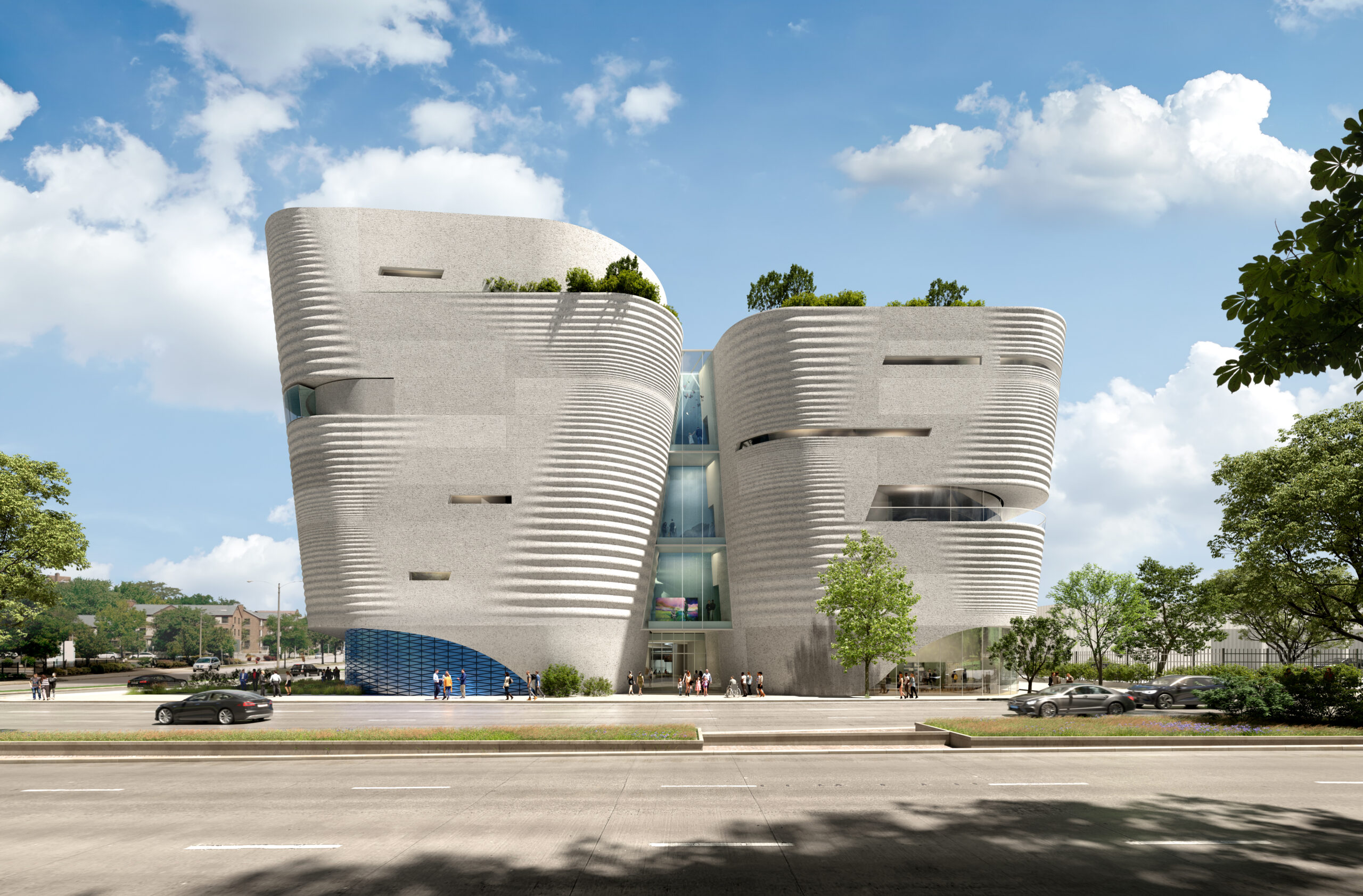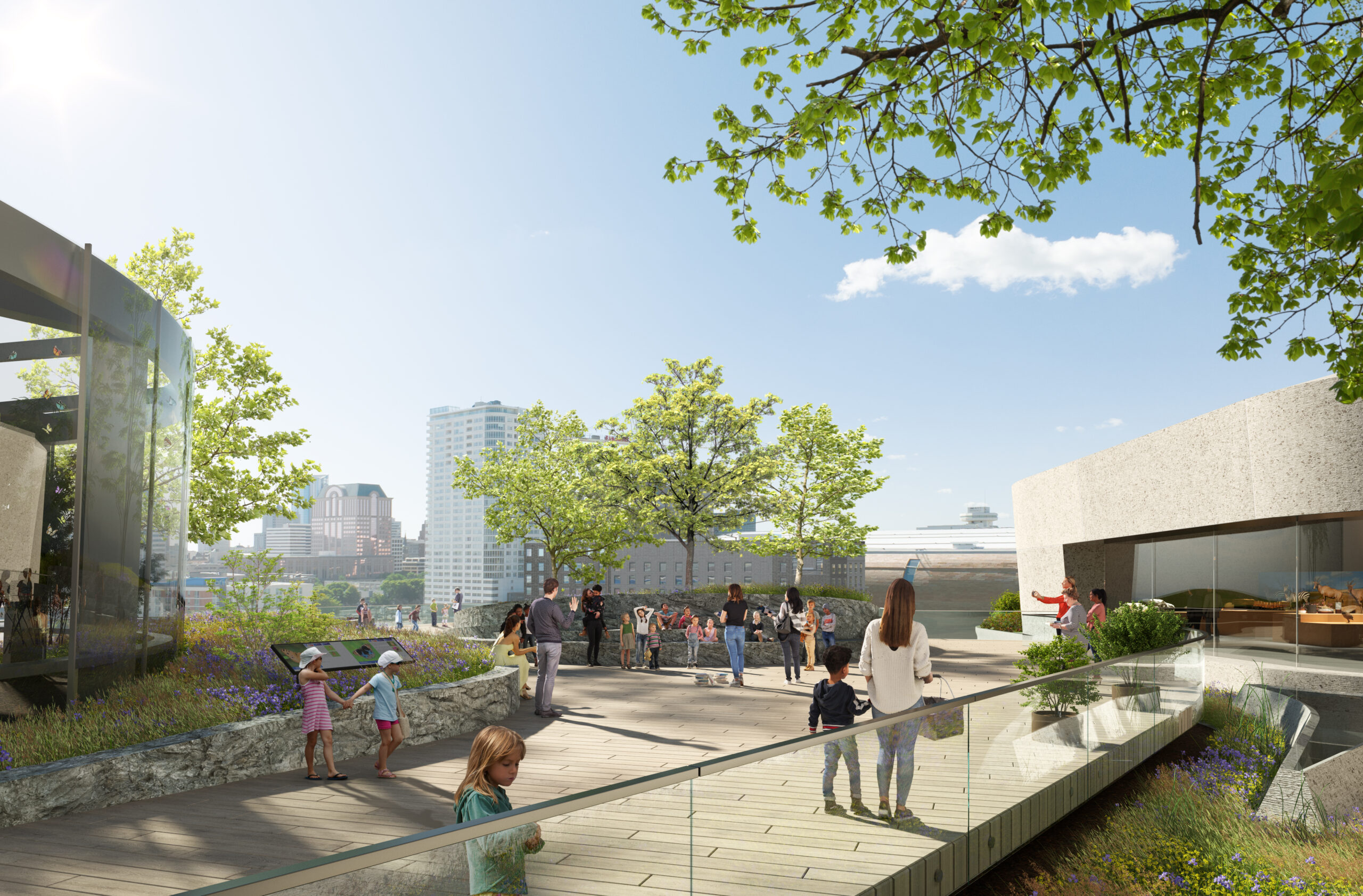With nearly five years until the opening of its new museum facility, the Milwaukee Public Museum is giving patrons a glimpse of what’s to come.
MPM and New York City-based Thinc Design on Tuesday unveiled sketches of the future museum’s “Time Travel” gallery, featuring dinosaurs, fossils and ancient sea creatures. It’s the first of five permanent galleries – or group of related exhibits – that MPM will reveal plans for between now and May 23, in an effort to generate excitement and donor support.
“The Time Travel gallery will trace the distinct origins and adaptations of life on our ever-changing planet and prompt visitors to wonder what life on Earth looked like millions of years ago,” said Ellen Censky, president and chief executive officer of MPM. “Full of familiar, reimagined features as well as exhibits with new-to-visitors collections items or concepts, Time Travel will focus on three of our planet’s geological chapters: the Paleozoic, Mesozoic, and Cenozoic eras.”
The gallery will include the Curtis L. and Jean E. Carter Cenozoic Hall, named in recognition of a newly announced $1 million gift from Curtis and Jean Carter. The couple joins a cohort of 20 benefactors who have made major gifts of $1 million or more to the Wisconsin Wonders fundraising campaign to build the new museum. All told, the campaign has now raised more than $128 million, including $45 million from Milwaukee County and $40 million from the state, toward the $240 million goal.
“Each time we’re able to provide more information, that gets donors more excited,” said Censky. “Donors are really excited about this, and they’re now starting to come out of the woodwork for this.”
Within the Curtis L. and Jean E. Carter Cenozoic Hall, visitors will be able to explore the evolution of mammals through fossils of saber-toothed cats and other creatures of the era, see the impact of the arrival of the first humans and take a closer look at how the planet responds to and influences human behaviors, according to a news release.
Current MPM visitors will recognize the iconic Hebior Mammoth Hunt exhibit, shown from a new perspective. As described by MPM, “Visitors will come face to face with the imposing skeleton of a woolly mammoth. Perched above it on the edge of a bluff, a stealthy group of human hunters prepare to strike.”
The Mesozoic Hall will transport visitors back to a time when dinosaurs roamed the Earth, again featuring portions of exhibits that current MPM visitors will recognize. For example, the “Torosaur Clash” is a diorama of two torosaurs fighting – one depicted using the fossilized skeleton currently on display at MPM and the other, a new model of a fully fleshed dinosaur.
The diorama is a “prime example of how scientific research and discovery by MPM experts informs what we know about science and history,” said Oronde Wright, senior exhibition designer at Thinc Design and a lead designer on the future museum project.
“The exhibit is inspired by a puncture wound on the torosaur skeleton that, through scientific research, was determined to be caused by another torosaur. Because of that wound, we can better understand the behavior of the species of the Cretaceous period – like how they fought over resources or mates – and what they left behind,” said Wright.
Another familiar sight, MPM’s famous T. rex will make an appearance in the background of the Torosaur Clash.
The Paleozoic Hall will include exhibits that depict the unique planetary conditions that supported evolving life between 540 and 250 million years ago and demonstrate how that life impacted the planet. Visitors will learn about some of the earliest life on the planet, the process of fossilization and the ways in which the Earth’s landscape has changed through plate tectonics, the impact of water and more, according to the release.
Among the hall’s collection items will be the Cambrian Diplichnites fossil, or Cambrian Trackway, a 2,600-pound slab of sandstone discovered in central Wisconsin containing animal tracks that are half a billion years old. It will be on display for the first time since 2017.
“The Cambrian Trackway is one of the earliest pieces of evidence demonstrating how and when animal species moved from water to land – and for years, it has been sitting in the basement of MPM with no place to be put on permanent display,” said Censky.
The four upcoming unveilings will provide an inside look at a sampling of exhibits, collections items and features visitors can expect to see at the future museum, which is on track to break ground late this year or early next year for a late 2026 completion.
Below is the gallery announcement schedule:
March 23: Wisconsin Journey
The “Wisconsin Journey” gallery is an entire exhibit floor focused on the geological wonders and strong and varied cultures of Wisconsin – from the Driftless Area to the Northwoods, the Apostle Islands, the Great Lakes and Wisconsin’s vast prairielands.
April 14: Milwaukee Revealed
“Milwaukee Revealed” will immerse visitors in city streetscapes they can explore to learn about the history of Milwaukee, the people who came to settle and live here and its interconnected systems, neighborhoods and ecologies (and where children can shop for a sweet treat).
May 9: Living in a Dynamic World and Mixing Zones
In the “Living in a Dynamic World” gallery, visitors will take an unconventional journey to five distinct ecosystems across the globe and be immersed in the landscapes and cultures that occupy them. The Mixing Zones, including the Burke Foundation Mixing Zone, are two spaces that will showcase a rotating selection of collection items, offer spaces for public interaction and programming and turn the museum “inside out” by providing behind-the-scenes views into the collections’ storage areas.
May 23: Rainforest, Daniel M. Soref Planetarium, Puelicher Butterfly Vivarium and the Bucyrus Rooftop Terrace
The “Rainforest” gallery will take visitors to the tropics to learn about the biodiversity that flourishes in tropical rainforests and the life rainforest climates support.











